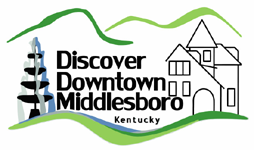30 Ideas in 30 Days
 |
| Andrew Howard of Better Block. Credit: "The Better Block Project San Antonio TX," YouTube. |
This next idea comes to us compliments of Fernanda Sotelo, a recent graduate of the Columbia University M.S. in Historic Preservation program. Her graduate thesis, Beyond Temporary: Preserving the Built Environment with Temporary Urban Interventions analyzed three Better Block projects in-depth. Some recommendations of best practice were presented for how temporary interventions may prompt long-lasting gains through historic preservation.
The most important aspects of temporary urban interventions Sotelo identified were: direct public participation, long-term goals and objectives, continued activation of spaces through periodic interventions, analysis of intervention results and reassessment of long-term goals, professional guidance from a preservationist throughout the intervention, and development and adoption of a preservation plan. As Sotelo envisions it, the intervention consists of three phases: pre-planning, the event itself, then analysis and follow-up action after the initial event is done.
Sotelo has the most recommendations to provide for pre-event planning during Phase I. Among the actions she calls for is to create the project team, identify the project site, devise an intervention plan and length. Work needs to be done on outreach and collaboration, establishment of public participation methods, and beginning of work on a preservation plan during this phase. Obtaining permission from property owners and getting permits that are needed to make interventions is done. This is where her professional preservation training runs afoul somewhat with the haphazard and seemingly spontaneous nature of the Better Block model. Getting variances, permits, and approvals is too bothersome for most Better Block practitioners to follow. Nonetheless, this is an important and indeed a required step if true historic preservation gains are to be made. For at the essence of historic preservation is the orderly improvement over time of specially designated places.
The preservation plan that is started in Phase I "will be used throughout the intervention process to not only document the planning and results of the intervention but also inform the intervention." Elements to include in the plan are identification of historic built assets, better understanding the history of the area to be effected, understanding the current condition of the existing built environment. The plan also presents opportunities to study challenges of the environment like zoning and parking and to establish future goals and objectives for the community. Sotelo also suggests the preservation plan is a helpful tool in identifying the types of businesses that might do well in vacant spaces in the affected area. This brings in the element of market analysis to the process. Again, such a formal analysis is somewhat beyond what most temporary interventions undertake. Nonetheless, if the people and organizations undertaking the intervention have this capacity, it would be wise to incorporate this into an ideal model of best practice.
In Phase II, which covers the intervention itself, Sotelo calls for creating task teams. These teams implement various aspects of the intervention. Examples of work undertaken include landscaping, building painting and restoration, street lighting, set-up of retail spaces, bike-lane creation, and carpentry and skilled work. Teams are also needed for take-down and clean-up. Where Sotelo differs from other approaches is in suggesting the need for professionals in restoration. Few if any Better Block projects have engaged restoration professionals as part of the project.
Finally, Phase III begins after the event is over. Sotelo recommends to:
- Organize follow up meetings. Bring the community back to analyze the intervention and to assess and evaluate future goals. Surveys and polls may also be valuable tools to gather input following the intervention. Sotelo recommends that this evaluation be guided by a preservation professional.
- Finalize the preservation plan. Record findings and results from the intervention into a formal preservation plan. Allow for future goals and objectives to be occasionally reassessed. Future sites for interventions may be identified, and a variety of different uses for the target area may be tested and ultimately implemented. The plan may also include guidelines of how to continue the improvement of the area through future interventions and providing incentives to support revitalization efforts.
In the ideal model that Sotelo presents, it differs from most prior temporary interventions and Better Block projects by requiring a preservationist be brought in at the beginning of the process to facilitate. As such, any Better Block interventions undertaken help to achieve the same goal that preservation seeks - to promote economic development through utilizing existing assets. Proper community engagement will create a constituency of people to serve as stewards of what results. When carried our properly, temporary interventions have the potential to transform the built environment for the better and create great benefit for the community being served.
Better Block Middlesborough was held from October 25-27, 2013, in Middlesborough, Kentucky. To help with planning for future events like this, please consider making a donation today!
Managing the Event
Managing the Event
- #1: Think Incrementally
- #2: Build a Better Block
- #3: Encourage Public Participation
- #4: Temporary to Permanent
- #5: Pre-Vitalization
- #6: Leverage the Power of the Crowd
- #7: Raise the Funds You'll Need
- #8: The Strength of Main Street
- #9: Sidewalk Stencils and Signs
- #10: Blackmail Yourself
Welcoming People
- #11 The Power of 10
- #12 Walk [Your City]
- #13 Mobile Vendors
- #14 Food Trucks and Carts
- #15 Plant Trees
- #16 Cover Up Blank Walls
- #17 Free Library
- #18 Pop-up Parks
- #19 Pop-Up Shops
- #20 Temporary Improvements Encourage Historic Preservation Planning


No comments:
Post a Comment